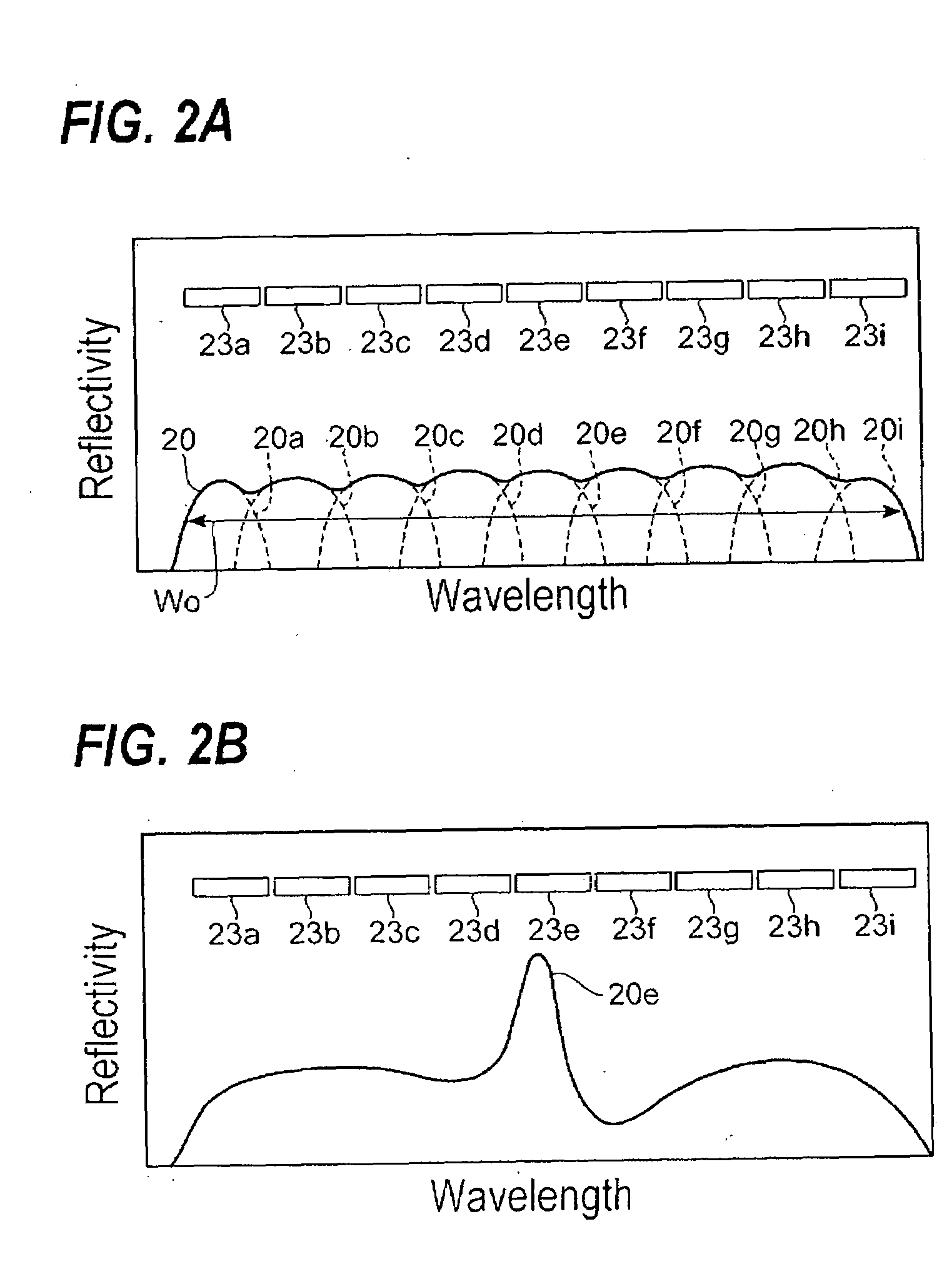Semiconductor light-emitting device with tunable emission wavelength
- Summary
- Abstract
- Description
- Claims
- Application Information
AI Technical Summary
Benefits of technology
Problems solved by technology
Method used
Image
Examples
first embodiment
[0036]FIG. 1 schematically illustrates a semiconductor light-emitting device 11 according to an embodiment of the present invention. A feature of the present device is that the output wavelength emitted therefrom may be tunable. The device 11 includes an optical reflector 13, a reflective end 15, a gain waveguide 17, and a ring resonator 19. These elements are formed on a semiconductor substrate.
[0037]The optical reflector 13 includes a plurality of diffraction gratings, 21a, 21c and 21i, each having independent electrodes, 23a to 23c and 23i. FIG. 1 includes magnified views of respective gratings, 21a, 21c and 21i, each taken along the line I-I. The period of the gratings, 21a, 21c and 21i, are different from each other. The electrodes, 23a, 23c and 23i, are accompanied with respective gratings, 21a, 21c and 21i.
[0038]One end surface 11a of the semiconductor substrate forms the reflective end 15. The gain waveguide 17 has an optical gain due to the carrier injection from the elect...
second embodiment
[0079]FIG. 11 illustrates a light-emitting device according to the second embodiment of the present invention. The light-emitting device 111 of the present embodiment provides, on the semiconductor substrate, an optical reflector 113, a reflective end 15, a gain waveguide 17 and a ring resonator 19. The elements without the optical reflector 113 have the same configurations with those of the first embodiment. The optical reflector 113 includes a chirped grating 121 and a plurality of electrodes, 123a, 123b, 123c, and 123i. FIG. 11 includes a sectional view that schematically illustrates the chirped grating 121 taken along the ling I-I.
[0080]The electrodes, 123a to 123i, are arranged along the primary axis of the chirped grating 121. The chirped grating 121 has a characteristic that the period of the refractive index linearly varies depending on the position. For instance, the chirped grating 121 includes a grating segment 121a with a period of the refractive index of Λa, a grating s...
PUM
 Login to View More
Login to View More Abstract
Description
Claims
Application Information
 Login to View More
Login to View More - R&D
- Intellectual Property
- Life Sciences
- Materials
- Tech Scout
- Unparalleled Data Quality
- Higher Quality Content
- 60% Fewer Hallucinations
Browse by: Latest US Patents, China's latest patents, Technical Efficacy Thesaurus, Application Domain, Technology Topic, Popular Technical Reports.
© 2025 PatSnap. All rights reserved.Legal|Privacy policy|Modern Slavery Act Transparency Statement|Sitemap|About US| Contact US: help@patsnap.com



